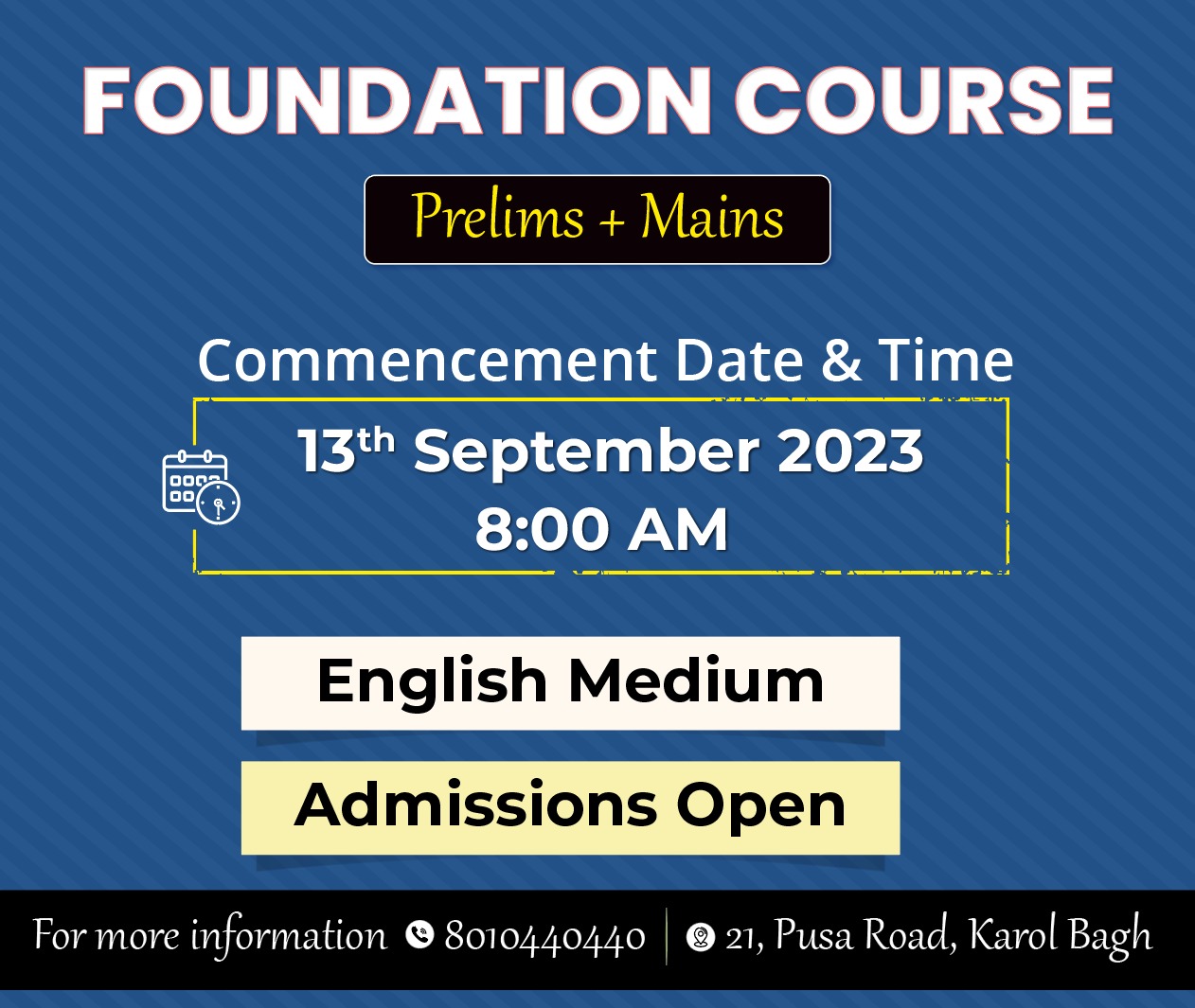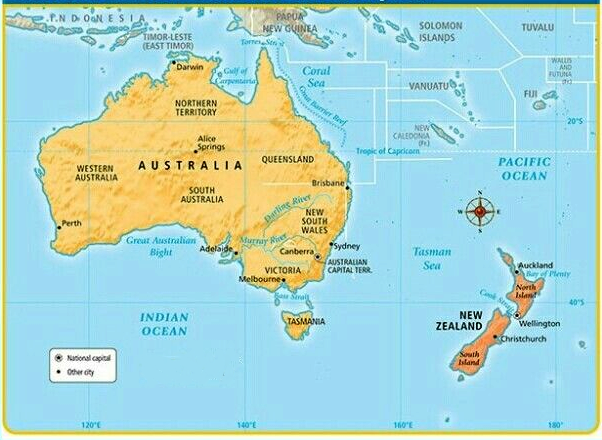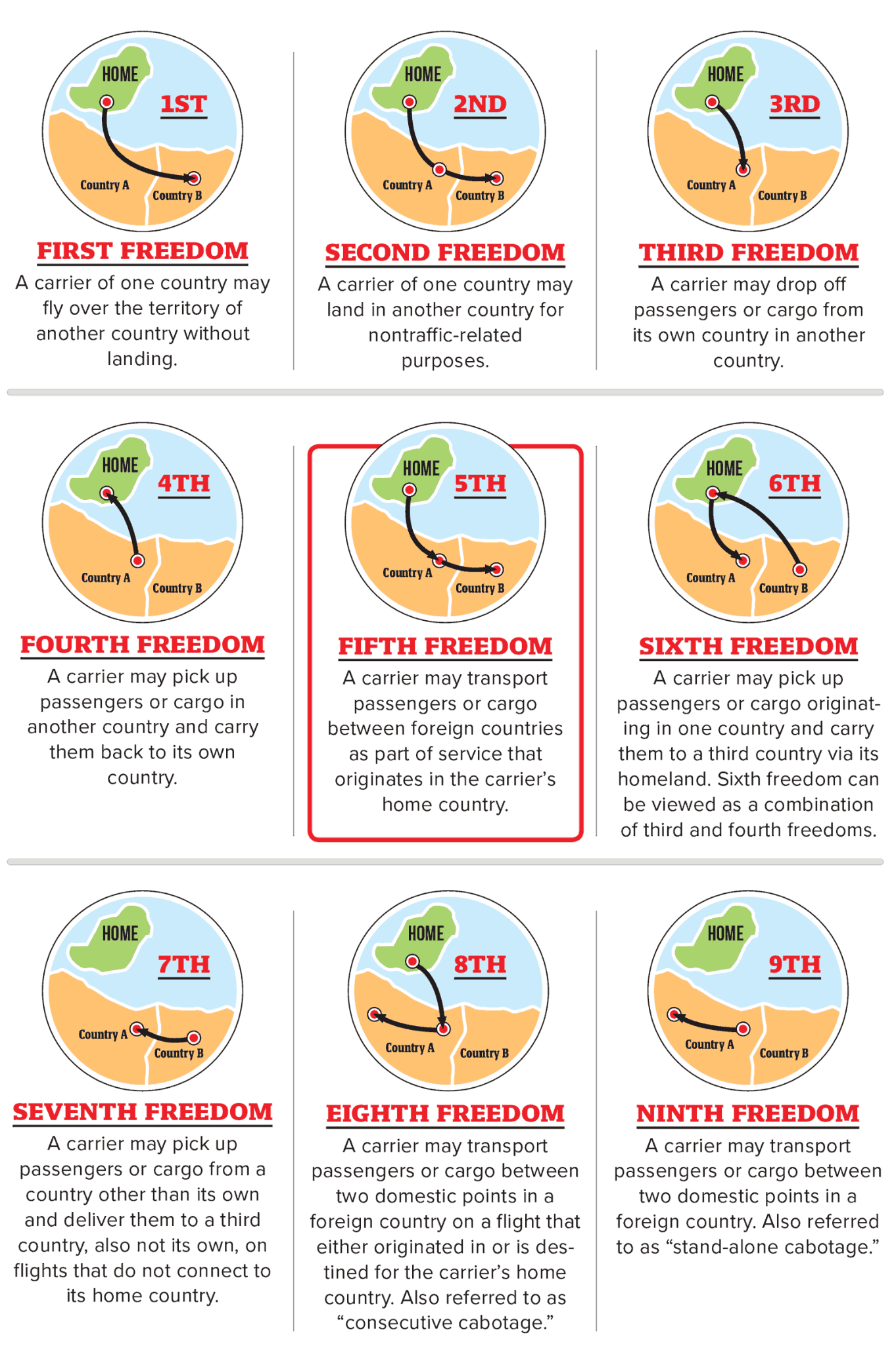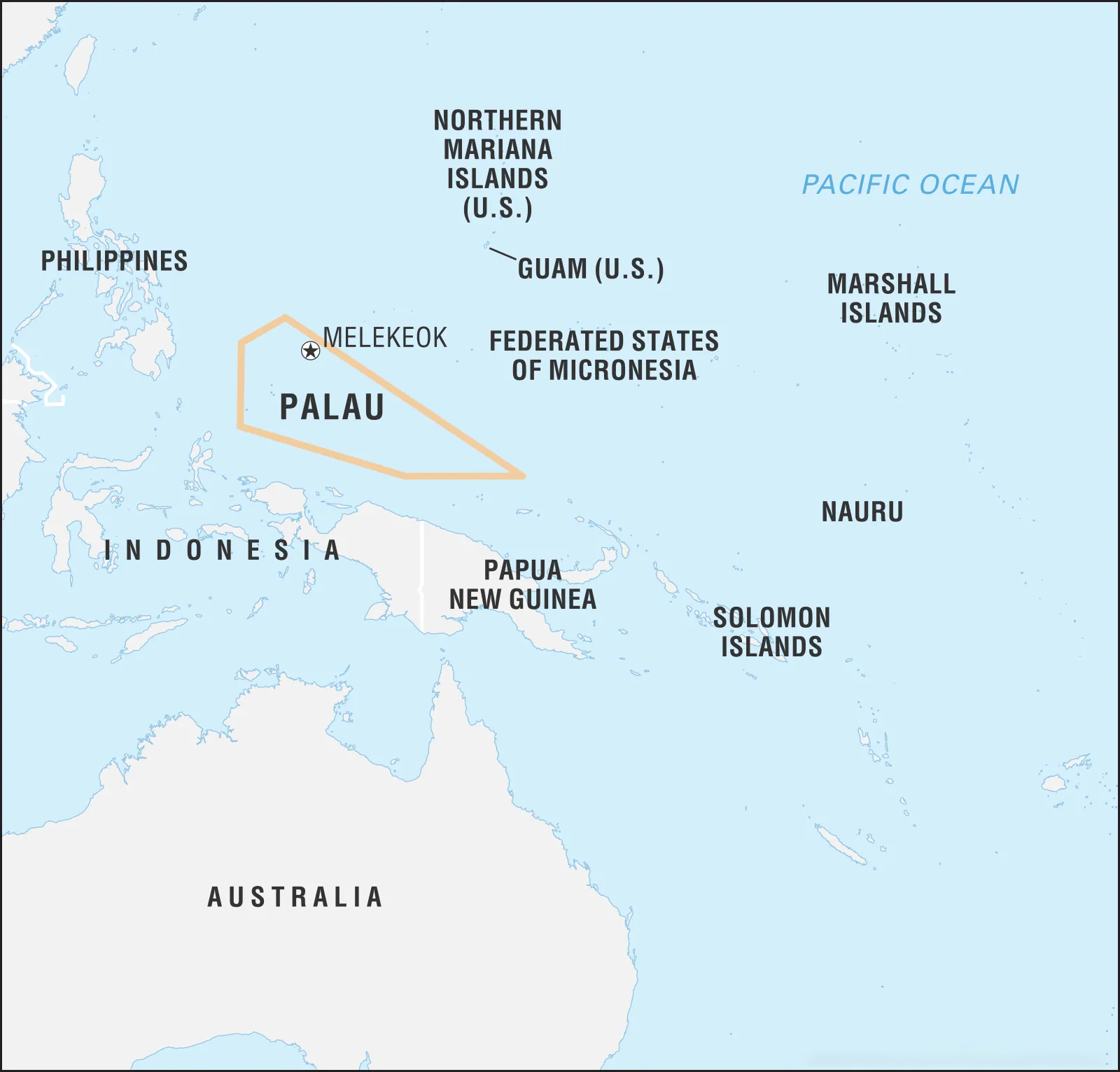Indian Polity
OBC Reservation in Local Bodies
For Prelims: OBC Reservation in local body polls, Article 243D(6) and Article 243T(6), K. Krishnamurthy (Dr.) v. Union of India (2010), PESA Act 1996, Triple Test
For Mains: OBC reservation in local body bolls and in education and jobs, Arguments in favour and against OBC reservation
Why in News?
Recently, the state government of Gujarat hiked reservations for Other Backward Classes (OBCs) from the existing 10% to 27% in the panchayats and urban local bodies.
Note:
- In 2022, the SC permitted Madhya Pradesh to provide reservation to OBC in Local Body Elections.
- In January 2022, following a plea by Maharashtra govt SC recalled its 2021 order which stayed 27% reservation for OBC in local body elections.
What are the Key Points about this Decision?
- The decision followed recommendations of the Justice K S Jhaveri Commission that was formed in response to a Supreme Court (SC) directive in 2022 to make suggestions for OBC reservation in local bodies in Gujarat.
- The expanded 27% OBC reservation will apply to all levels of local bodies (municipal corporations, municipalities, gram panchayats, taluka panchayats, and district panchayats).
- The increased OBC reservation, however, will not be applicable in areas covered by the PESA Act 1996 where the scheduled tribe (ST) population exceeds 50%. In such regions, OBC candidates will receive a 10% reservation.
- The existing quota for SCs (14%) and STs (7%) remains unchanged without any breach of the 50% reservation ceiling as mandated by the SC.
What is the SC’s View about Reservation in Local Bodies?
- In the five-judge Constitution Bench decision in K. Krishnamurthy (Dr.) v. Union of India (2010), the SC interpreted Article 243D(6) and Article 243T(6), which permit reservation by enactment of law for backward classes in panchayat and municipal bodies respectively.
- The SC also held that the barriers to political participation are not the same as the barriers that limit access to education and employment.
- Article 15 (4) and Article 16 (4) form the basis for reservation in education and employment.
- The SC also held that the barriers to political participation are not the same as the barriers that limit access to education and employment.
- However, the SC also held that although reservation to local bodies is permissible, it is subject to empirical finding of backwardness in relation to local bodies as fulfilled through the triple tests which refers to the following three conditions:
- Set up a dedicated Commission to conduct empirical inquiry into the nature of the backwardness in local bodies
- Specify the proportion of reservation required to be provisioned local body-wise
- Such reservation shall not exceed an aggregate of 50% of the total seats reserved for SCs/STs/OBCs taken together.
What are the General Arguments regarding OBC Reservation in Local Body Polls?
- Arguments in Favour:
- Empowerment, Inclusion and Participation: Reservation provides OBC individuals with opportunities to participate actively in local governance, allowing them to voice their concerns, advocate for their communities, and contribute to policy-making that affects their lives.
- Policy Relevance: Elected representatives from OBC communities are more likely to understand the challenges faced by their communities and work towards addressing them effectively.
- Skill and Leadership Development: Reservation would provide them more opportunities to gain experience in leadership roles, public speaking, and decision-making.
- Enhanced Political Awareness: It would encourage political awareness and engagement among community members inspiring them to contribute more actively in the political process.
- Long-Term Positive Impact: Proponents argue that over time, this may lead to a more equitable distribution of resources, improved socio-economic indicators, and reduced disparities between different sections of society.
- Arguments Against:
- Caste-Based Division: Some opponents contend that caste-based reservations perpetuate divisions within society, emphasising differences rather than fostering unity.
- Disadvantaged Groups Within OBCs: There is concern that within the OBC category, some groups may be more privileged (creamy layer) than others. Implementing reservations for the entire OBC category might result in some relatively more privileged groups benefiting disproportionately, while the most marginalised OBCs remain underrepresented.
- Reservation Efficacy: Sceptics also question the long-term efficacy of reservations in truly addressing socio-economic disparities. They argue in favour of alternative approaches like targeted welfare programs, skill development etc.
- Impact on Local Governance: There are apprehensions about political considerations outweighing governance concerns when candidates are elected through reservations. This could hinder effective decision-making and the overall development of local bodies.
UPSC Civil Services Examination, Previous Year Questions
Q. Local self-government can be best explained as an exercise in (2017)
(a) Federalism
(b) Democratic decentralisation
(c) Administrative delegation
(d) Direct democracy
Ans: (b)
Q. Consider the following statements: (2016)
- The minimum age prescribed for any person to be a member of Panchayat is 25 years.
- A Panchayat reconstituted after premature dissolution continues only for the remainder period.
Which of the statements given above is/are correct?
(a) 1 only
(b) 2 only
(c) Both 1 and 2
(d) Neither 1 nor 2
Ans: (b)
- According to Article 243F of the Indian Constitution, the minimum age required to become a member of Gram Panchayat is 21 years. Hence, statement 1 is not correct.
- According to Art 243E(4) of the Indian Constitution, a Panchayat constituted upon the dissolution of a Panchayat before the expiration of its duration will continue only for the remainder of the period for which the dissolved Panchayat would have continued. Hence, statement 2 is correct.


International Relations
Aviation Cooperation Between India and New Zealand
For Prelims: Global Research Alliance (GRA), New Zealand geographic location
For Mains: Infrastructural development in the aviation market, Benefits of India's participation in the Global Research Alliance (GRA) for its own agricultural practices
Why in News?
Recently, India and New Zealand signed a Memorandum of Understanding (MoU) to boost cooperation in civil aviation.
- Furthermore, a meeting took place between the Agriculture Ministers of both countries, where they not only reaffirmed their commitment to boost agricultural collaboration and invited India to join the Global Research Alliance(GRA).
What are the Key Highlights of MoU on Civil Aviation?
- Building upon an Air Services Agreement, 2016, the MoU aims to further strengthen the aviation partnership between India and New Zealand.
- The cooperation in civil aviation includes scheduling new routes, codeshare services, traffic rights, and capacity entitlement.
- Both India and New Zealand enjoy the privilege of exercising third and fourth freedom traffic rights, enabling them to conduct unlimited services using any type of aircraft.
- New Zealand's airlines can operate to/from six destinations in India, while Indian airlines can serve Auckland, Wellington, Christchurch, and three additional points in New Zealand, as determined by the Government of the Republic of India.
- Airlines from both countries can freely operate unlimited cargo services using any type of aircraft, with the right to stop at intermediate points and extend their services to destinations beyond, without being restricted by specified route points.
Freedom Traffic Rights in Aviation
- Freedom traffic rights refer to the rights granted to airlines by international agreements or treaties to operate air services between countries.
- These rights outline the extent to which airlines can fly into and out of a country, including the number of flights, routes, and destinations they can serve.
- There are different levels or "freedoms" of traffic rights, ranging from the first freedom (the right to overfly a country without landing) to the ninth freedom (cabotage, which allows foreign airlines to operate domestic flights within another country).
- These rights are negotiated and agreed upon in bilateral or multilateral air service agreements between nations.
Global Research Alliance
- The GRA is an international organization that brings countries together to find ways to grow more food without growing greenhouse gas emissions.
- The GRA was launched in 2009 by New Zealand and has since grown to include 67 member countries (India is not a member).
- The GRA goal is to reduce the emissions intensity of agricultural production systems and increase their potential for soil carbon sequestration.
- The GRA focuses on three main agricultural sub-sectors: paddy rice, croplands, and livestock.
- It also coordinates cross-cutting activities such as inventories and nationally determined contributions (NDCs), soil carbon and nitrogen cycling, and integrative research.
UPSC Civil Services Examination, Previous Year Question (PYQ)
Q. Match List I with List II and select the correct answer using the code given below the lists: (2009)
| List I (Geographic feature) | List II (Country) | ||
| A. | Great Victoria Desert | 1. | Australia |
| B. | Grand Canyon | 2. | Canada |
| C. | Lake Winnipeg | 3. | New Zealand |
| D. | Southern Alps | 4. | USA |
Code:
A B C D
(a) 1 2 4 3
(b) 1 4 2 3
(c) 3 2 4 1
(d) 3 4 2 1
Ans: (b)
Exp:
- The Great Victorian desert is Australia’s largest desert. It lies in western Australia and South Australia, extending from the Gibson desert on the north to the Nullarbor plain on the south and eastward from Kalgoorlie-Boulder almost to the Stuart Range.
- The Grand Canyon lies in the southwestern portion of the Colorado Plateau, which occupies a large area of the southwestern United States and consists essentially of horizontal layered rocks and lava flows.
- Lake Winnipeg has an area of 9,416 square miles (24,387 square km) and is one of Canada’s largest freshwater lake.
- Southern Alps is a mountain range on South Islands, New Zealand. It is the highest range in Australasia. It extends from Haast Pass, at the head of Wanaka Lake, northeastward to Arthur’s Pass. They vary in elevation from 3,000 feet (900 metres) to 16 peaks above 10,000 feet (3,050 metres) and culminate in Mount Cook which is about 12,316 feet (3,754 metres).
- Therefore, option (b) is the correct answer.
Mains
Q. Examine the development of Airports in India through joint ventures under Public–Private Partnership (PPP) model. What are the challenges faced by the authorities in this regard? (2017)


Internal Security
Indian Army Enhancing Operational Preparedness
For Prelims: Emergency Procurement, UAVs, Tethered drones, SWARM Drones, Make projects, iDEX (Innovation for Defence Excellence)
For Mains: Significance of enhancing capabilities of Indian armed forces
Why in News?
To enhance its overall operational preparedness, the Indian Army has signed contracts for the procurement of 130 tethered drones and 19 tank-driving simulators under Emergency Procurement (EP).
- The long-endurance tether drone systems can be used in high-altitude areas.
Note:
- The emergency financial powers were first given to the armed forces after the 2016 Uri attack to help them circumvent the slow bureaucratic system of procurement. Under these powers, the services can ink contracts worth Rs 300 crore each on their own.
What are Tethered Drones and Simulators?
- Tethered Drones: Tethered drones are a category of unmanned aerial vehicles (UAVs) linked to a ground-based station via a tether.
- These tethered drone systems, with wings that span both day and night, are meant to be watchful protectors, sending important data and video feeds to enhance border security continuously.
- Beyond aviation, tethered drones are a paradigm shift in surveillance, virtually anchored to the ground while bearing vital loads like cameras and radios.
- With their advanced sensor technology and ability to provide an uninterrupted view of vast areas, Tethered Drones can play a crucial role in enhancing situational awareness and tactical decision-making on the battlefield.
- Simulators: The simulators are supposed to virtually help in the training of the drivers of tanks and infantry combat vehicles (ICV) and will contribute to minimising wear and tear on tanks and ICVs during training.
How is the Indian Army Enhancing its Preparedness in Recent Times?
- The army is observing 2023 as the 'Year of Transformation', and is working on several projects to reshape and remodel the functional processes to bring in a "quantum jump in its capabilities".
- Since the India-China stand-off in Eastern Ladakh in 2020, the Army has concluded a series of contracts with Indian start-ups for small drones for surveillance and load-carrying.
- Niche technologies like logistic and nano drones, counter-drones, loiter munitions, SWARM drones, UAV-launched precision-guided missiles, and automatic spectrum monitoring systems, are being procured.
- Aligning with the larger vision of 'Atmanirbharta', the Army is achieving modernisation with indigenisation through various modes, such as 'Make' projects, iDEX (Innovation for Defence Excellence), and outreach programs like setting up of 'Army Cells' at leading technology institutions to promote R&D aligned with the army's requirements.
What are Some Initiatives to Boost Domestic Production of Defence Equipment?
- Defence Industrial Corridors
- Corporatization of the Ordnance Factory Boards
- Defence India Startup Challenge
- Draft Defence Production and Export Promotion Policy 2020
- Innovations for Defence Excellence (iDEX)
- Mission Raksha Gyan Shakti
- Indian Navy Indigenisation Plan (INIP) 2015-2030
- Naval Innovation and Indigenisation Organisation (NIIO)
Why is it Significant for the Indian Army to Enhance its Capabilities?
- National Security: Given India's complex geostrategic environment and its history of conflicts, bolstering defence capabilities is essential to safeguard its borders and citizens.
- Deterrence: India's robust defence forces can discourage adversaries from initiating conflicts or hostile actions, contributing to regional stability.
- Conflict Resolution: In the unfortunate event of a conflict, superior defense capabilities can lead to quicker and more favorable conflict resolutions.
- Counter Terrorism: India has faced numerous instances of terrorism and insurgent activities; enhanced defence capabilities allow for more effective counterterrorism operations.
- Strategic Autonomy: Strengthening defence capabilities reduces dependency on external sources for defence equipment, technology, and expertise, enhancing India's strategic autonomy.
UPSC Civil Services Examination, Previous Year Question (PYQ)
Prelims:
Q. What is “Terminal High Altitude Area Defense (THAAD)”, sometimes seen in the news? (2018)
(a) An Israeli radar system
(b) India’s indigenous anti-missile program
(c) An American anti-missile system
(d) A defence collaboration between Japan and South Korea.
Ans: C
Q. From which one of the following did India buy the Barak anti-missile defence systems? (2008)
(a) Israel
(b) France
(c) Russia
(d) USA Ans: (a)
Q. In the context of the Indian defense, what is ‘Dhruv’? (2008)
(a) Aircraft-carrying warship
(b) Missile-carrying submarine
(c) Advanced light helicopter
(d) Intercontinental ballistic missile
Ans: (c)
Mains:
Q. How is S-400 air defense system technically superior to any other system presently available in the world? (2021)


Governance
India's 6th Minor Irrigation Census
For Prelims: Minor Irrigation Census, Minor irrigation schemes
For Mains: Initiatives Related to Irrigation, Importance of census on minor irrigation
Why in News?
The Ministry of Jal Shakti has released the 6th census of minor irrigation schemes (with reference year 2017-18), shedding light on the state of irrigation practices across India.
- So far, five censuses were conducted in 1986-87, 1993-94, 2000-01, 2006-07, and 2013-14.
What are the Key Highlights of the Report?
- Total Minor Irrigation Schemes:
- A total of 23.14 million minor irrigation (MI) schemes have been reported in the country.
- Among these, 21.93 million (94.8%) are groundwater (GW) schemes, and 1.21 million (5.2%) are Surface Water (SW) schemes.
- A total of 23.14 million minor irrigation (MI) schemes have been reported in the country.
- Dominant Types of Schemes:
- Dug-wells have the highest share in MI schemes followed by shallow tube-wells, medium tube-wells and deep tube-wells.
- The 6th MI census recorded an increase of about 1.42 million MI schemes compared to the previous census.
- Nationally, GW schemes saw a 6.9% increase, while SW schemes increased by 1.2%.
- Leading States in MI Schemes:
- Uttar Pradesh leads in MI schemes in India, followed by Maharashtra, Madhya Pradesh, and Tamil Nadu.
- Maharashtra is the leading State in dug-wells, surface flow and surface lift schemes.
- Uttar Pradesh, Karnataka and Punjab are the leading States in shallow tube-wells, medium tube-wells and deep tube-wells, respectively.
- In SW schemes, Maharashtra, Karnataka, Telangana, Odisha and Jharkhand have the highest share.
- Ownership Breakdown:
- Approximately 96.6% of MI schemes are under private ownership.
- Among GW schemes, 98.3% are owned by private entities, and in SW schemes, this share is 64.2%.
- For the first time, data on the gender of MI scheme owners was collected.
- 18.1% of individually owned schemes are owned by women.
- Financing and Sources:
- Around 60.2% of schemes are financed through a single source.
- Own savings of individual farmers contribute significantly to single-source financing (79.5%).
- 39.8% of schemes have more than one source of finance.
- Around 60.2% of schemes are financed through a single source.
What is a Minor Irrigation scheme?
- A minor irrigation scheme is a type of irrigation project that uses surface water or groundwater to irrigate a culturable command area (CCA) of up to 2,000 hectares.
- CCA is an area which can be irrigated from a scheme and is fit for cultivation.
- Minor irrigation schemes are classified into two major categories and six sub-categories.
- Ground Water (GW) schemes encompass dugwells, shallow tube wells, medium tube wells, and deep tube wells.
- Surface Water (SW) schemes consist of surface flow and surface lift schemes.
- The minor irrigation schemes provide the farmers with controlled and timely irrigation which the new high yielding varieties of seeds demand. These schemes are labour intensive, less implementation period and involve reasonable investments for their commissioning.
What are the Initiatives Taken by the Government Related to Irrigation?


International Relations
G20 Culture Ministerial Meeting and B20 Summit 2023
For Prelims: G20, Business 20 (B20), Artificial intelligence (AI)
For Mains: Role of the B20 in fostering collaboration among global business leaders, the importance of preserving cultural heritage.
Why in News?
Recently, the Prime Minister (PM) of India concluded the G20 Culture Ministerial Meeting in Varanasi, Uttar Pradesh, with a consensus on safeguarding cultural heritage highlighting repatriation and addressing threats to assets.
- Additionally, the PM also addressed the Business 20 (B20) India 2023 summit in New Delhi.
What are the Key Highlights of the G20 Culture Meet?
- Acknowledgment of Threats to Cultural Heritage:
- The "Kashi Culture Pathway" document identified various threats to cultural heritage, including looting, illicit trafficking of cultural property, destruction of cultural sites, desecration of relics, and more.
- Impact of Cultural Threats:
- These threats can lead to the irreversible loss of cultural assets, disrupt socio-cultural practices, and affect the cultural, human, economic, and social rights of people and communities.
- Concern Over Illicit Online Trade:
- Culture ministers from G20 countries expressed concerns about the rise of online platforms enabling illicit trafficking of cultural property and emphasized the need for potential regulations to address this issue.
- Link Between Cultural Property and Organized Crime:
- Ministers highlighted the connection between the destruction and trafficking of cultural property and organized crimes like money laundering, corruption, tax evasion, and terrorist financing, especially in conflict situations.
- Unity Against Cultural Destruction:
- All participating nations united against intentional or collateral destruction of cultural heritage, particularly in conflict scenarios that hinder peace and sustainable development.
- Commitment to Living Heritage for Development:
- The G-20 nations also reaffirmed their commitment to strengthen institutional and policy frameworks to harness living heritage (inherited from our ancestors and passed on to our descendants) for sustainable development.
- Prime Ministers' Museum:
- The PM of India highlighted the "Prime Ministers’ Museum" in New Delhi, which showcases India's democratic heritage and emphasized the development of the "Yuge Yugeen Bharat" National Museum, set to become the world's largest museum showcasing India's history and culture spanning over 5,000 years.
What is Business 20 (B20)?
- About:
- The B20 is the official G20 dialogue forum involving the global business community.
- B20 plays a leading role in mobilizing global business leaders' perspectives on global economic and trade governance.
- It represents the unified voice of the entire G20 business community.
- Each year, a B20 Chair is appointed by the G20 Presidency, supported by a B20 Sherpa and secretariat.
- B20's goal is to provide actionable policy recommendations aligned with rotating presidency priorities to foster economic growth.
- B20 operates through Task Forces (TFs) and Action Councils (ACs) responsible for consensus-based policy recommendations.
- These recommendations are directed towards the G20 and international organizations.
- B20 India 2023 Theme:
- The theme for the B20 India is R.A.I.S.E. This stands for Responsible, Accelerated, Innovative, Sustainable, Equitable Businesses.
- The vision is to collaborate with global partners in areas such as inclusive global value chains (GVCs), energy and climate change, digital transformation, financial inclusion, and the future of work.
- The theme for the B20 India is R.A.I.S.E. This stands for Responsible, Accelerated, Innovative, Sustainable, Equitable Businesses.
- B20 India Members:
- Argentina, Australia, Brazil, Canada, China, France, Germany, India, Indonesia, Italy, Japan, Republic of Korea, European Union, United States, United Kingdom, Türkiye, South Africa, Saudi Arabia, Russia, and Mexico.
- Highlights of B20 India Summit:
- Caution Against Treating Countries as Markets:
- The PM of India cautioned global businesses to move beyond treating countries solely as markets.
- Stressed the importance of balancing the interests of both producers and consumers for sustaining a profitable market.
- Global Supply Chain Disruptions and India's Solution:
- Pointed to irreversible disruptions in global supply chains post-Covid-19 pandemic.
- Questioned the efficiency of such supply chains during critical times.
- Presented India as a trustworthy solution to address disruptions in global supply chains.
- Highlighted India's technological prowess, indicating its capacity to adopt innovative solutions and digital tools to manage and optimize supply chains.
- Rethinking Business Approach:
- Advocated for a reboot of the traditional "brand and sales" approach.
- Emphasized the need to improve the purchasing power of people.
- Highlighted India's success in lifting 13.5 crore people out of poverty in five years, creating a new consumer base.
- Advocated for a reboot of the traditional "brand and sales" approach.
- International Consumer Care Day:
- Suggested an annual "International Consumer Care Day" to enhance trust between producers and buyers.
- Proposed businesses globally come together to pledge commitment towards consumers' well-being and market integrity.
- Suggested an annual "International Consumer Care Day" to enhance trust between producers and buyers.
- Cryptocurrencies and AI Ethical Considerations:
- Addressed the emerging challenges posed by cryptocurrencies and artificial intelligence (AI).
- Highlighted the need for an integrated global framework to address concerns from all stakeholders.
- Discussed ethical considerations associated with AI, including algorithm bias and societal impact.
- Advocated for collaboration between global business communities and governments to ensure the expansion of ethical AI.
- Addressed the emerging challenges posed by cryptocurrencies and artificial intelligence (AI).
- Challenges and Opportunities:
- Urged businesses and society to analyze decisions' impact on the planet.
- Stressed that answers to challenges like climate change, energy crisis, food supply chain imbalance, and cybersecurity will shape business and humanity's future.
- B20 Task force Recommendations:
- The Task Force has made four key recommendations they are
- Global Sustainable Development Goals (SDG) Acceleration.
- Fund for financing of ‘Global Public Goods’ (with initial thrust on geographically fungible SDG projects in climate, energy, biodiversity, and ocean pollution)
- Capacity building of domestic financial sectors for SDGs financing
- Improving MSME access to finance and reducing cost of capital to foster inclusive growth.
- Financing sustainable and resilient infrastructure with enhanced focus on healthcare, energy, and digital infrastructure.
- The Task Force has made four key recommendations they are
- Caution Against Treating Countries as Markets:
Ethical AI:
- AI that adheres to well-defined ethical guidelines regarding fundamental values, including such things as individual rights, privacy, non-discrimination, and non-manipulation.
UPSC Civil Services Examination Previous Year’s Question (PYQs)
Prelims:
Q. In which one of the following groups are all the four countries members of G20? (2020)
(a) Argentina, Mexico, South Africa and Turkey
(b) Australia, Canada, Malaysia and New Zealand
(c) Brazil, Iran, Saudi Arabia and Vietnam
(d) Indonesia, Japan, Singapore and South Korea
Ans: (a)
Q. Consider the following statements about G-20: (2023)
- The G-20 group was originally established as a platform for the Finance Ministers and Central Bank Governors to discuss the international economic and financial issues.
- Digital public infrastructure is one of India's G-20 priorities.
Which of the statements given above is/are correct?
(a) 1 only
(b) 2 only
(c) Both 1 and 2
(d) Neither 1 nor 2
Ans: (c)


Important Facts For Prelims
World Sanskrit Day 2023
Why in News?
In 2023, the celebration of World Sanskrit Day takes place on 31st August.
What are the Important Facts about World Sanskrit Day?
- History:
- The first World Sanskrit Day was celebrated in 1969.
- World Sanskrit Day or Vishwa Sanskrit Diwas is celebrated on Purnima Tithi (Full moon) of Shravana month every year.
- It serves as a tribute to the birth anniversary of Paṇini, a distinguished Sanskrit scholar and grammarian.
- Importance:
- This day is celebrated to show gratitude and respect towards the Sanskrit language.
What are Some of the Important Facts about the Sanskrit Language?
- It is an Indo-Aryan language and is considered to be one of the oldest languages and is known as the mother of most languages of India.
- It is believed to have originated in India around 3500 years ago and is often referred to as Dev Vani (the language of the deities).
- It is divided into two parts which are Vedic and classical.
- Vedic Sanskrit is the older and more archaic form of Sanskrit, which is attested in the Rig Veda, the Upanishads, and the Puranas.
- Classical Sanskrit is the later and more standardised form of Sanskrit, which is based on the grammar of Panini and used in literature, philosophy, science, and art.
Note:
- Sanskrit is among the 22 official languages included in the Eight Schedule of the Indian Constitution.
- It is also included among 6 Classical languages besides Tamil, Telugu, Kannada, Malayalam, and Odia.
- In 2010, Sanskrit was declared the second official language of Uttarakhand.
- In Mattur village of Karnataka everyone speaks in the Sanskrit language.
UPSC Civil Services Examination, Previous Year Question (PYQ)
Prelims:
Q. Which one of the following was given classical language status recently? (2015)
(a) Odia
(b) Konkani
(c) Bhojpuri
(d) Assamese
Ans: (a)
Q. Consider the following languages: (2014)
- Gujarati
- Kannada
- Telugu
Which of the above has/have been declared as ‘Classical Language/Languages’ by the Government?
(a) 1 and 2 only
(b) 3 only
(c) 2 and 3 only
(d) 1, 2 and 3
Ans: (c)
Q. Under which one of the following Constitution Amendment Acts, four languages were added to the languages under the Eighth Schedule of the Constitution of India, thereby raising their number to 22? (2008)
(a) Constitution (Ninetieth Amendment) Act
(b) Constitution (Ninety-first Amendment) Act
(c) Constitution (Ninety-second Amendment) Act
(d) Constitution (Ninety-third Amendment) Act
Ans: (c)


Rapid Fire
Rapid Fire Current Affairs
US and Palau Enhance Maritime Enforcement
- Recently, the United States and the Republic of Palau, a country in the western Pacific Ocean, signed an expanded bilateral law enforcement agreement to enhance maritime governance.
- The agreement enables the U.S. Coast Guard to enforce regulations at sea in Palau's exclusive economic zone (EEZ) on behalf of Palau even without the presence of a Palauan officer.
- The agreement will help increase maritime domain awareness and prevent Illegal, Unreported, and Unregulated (IUU) Fishing within Palau's EEZ.
Read more: Rising Illegal, Unreported and Unregulated (IUU) Fishing, Palau Joins ISA
Mahendragiri
- Mahendragiri, the last Project 17A Frigate, will be launched on 1st September 2023.
- The ship is named after a mountain peak in Eastern Ghats located in the state of Orissa.
- Project 17A Frigates are follow-ons of the Project 17 Class Frigates (Shivalik Class), with improved stealth features, advanced weapons and sensors, and platform management systems.
- Mahendragiri is a technologically advanced warship and stands as a symbol of India's determination to embrace its rich naval heritage.
- Project 17A ships have been designed in-house by the Indian Navy’s Warship Design Bureau.
Read more: Project 17A and INS Taragiri
Contribution of Ernest Rutherford
Ernest Rutherford won the Nobel Prize for Chemistry in 1908. He hypothesised that helium gas could be formed from radioactive substances.
- He discovered that there are at least two types of radiation, alpha (α) and beta (β) particles, coming from uranium.
- His most famous experiment is the gold foil experiment:
- A beam of alpha particles was aimed at a piece of gold foil. Most alpha particles passed through the foil, but a few were scattered backward.
- This showed that most of the atom is empty space surrounding a tiny nucleus (positively charged and surrounded at a great distance by the negatively charged electrons).










